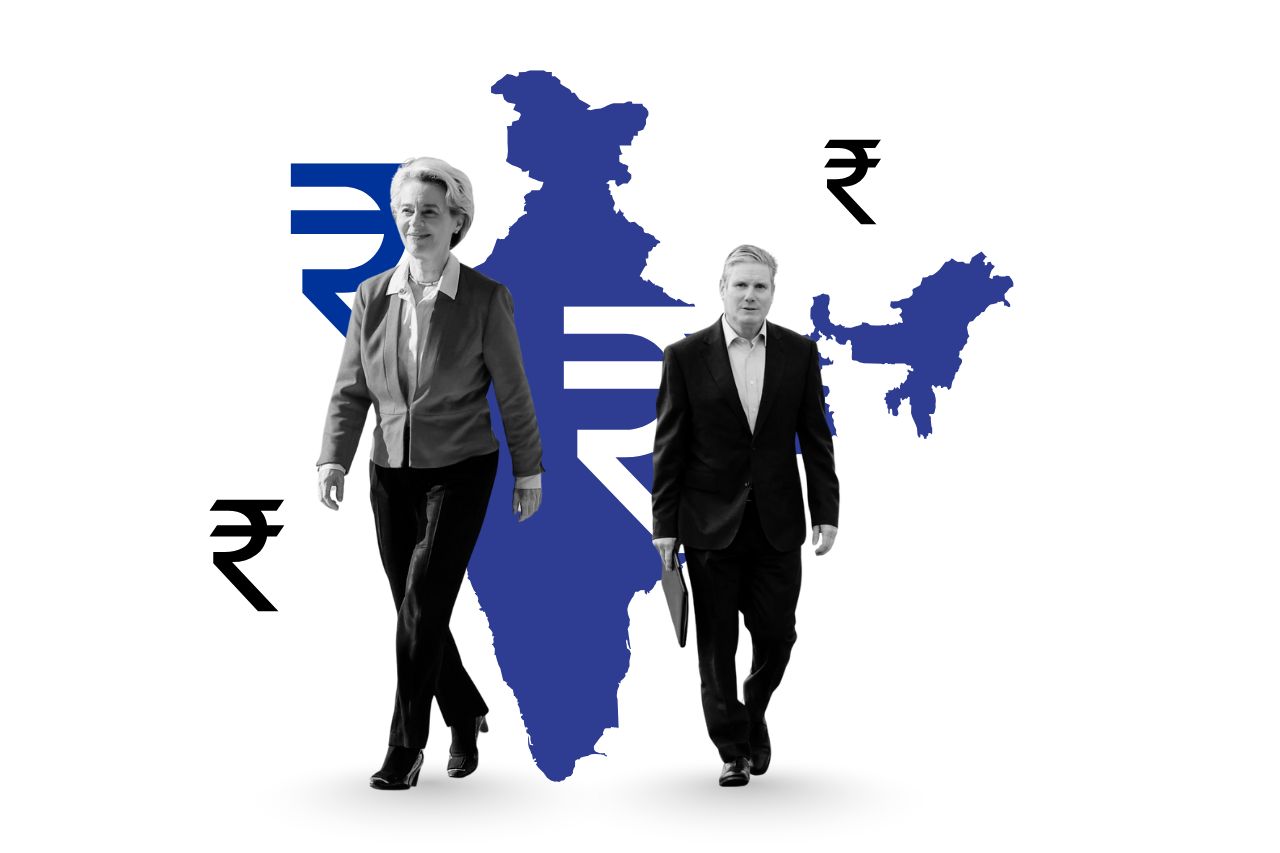
India’s trade relationships with the United Kingdom and the European Union are at a turning point, driven by a shared vision to harness technology, artificial intelligence (AI), and innovation in a rapidly shifting global landscape. As the world’s fifth-largest economy, India is leveraging its tech expertise and young workforce to deepen ties with these Western partners. The recently signed UK-India Free Trade Agreement (FTA) and ongoing EU-India FTA talks signal a new era of collaboration, where digital trade and AI are as critical as traditional goods. Drawing from books like India and the European Union in a Turbulent World by Rajendra K. Jain, which explores post-Cold War dynamics, and insights, this article examines how these trade deals are reshaping global opportunities through technology and geopolitics.
UK-India FTA: A New Chapter After Brexit
The UK-India FTA, finalized in July 2025, is a landmark deal projected to boost bilateral trade by £34 billion annually by 2040. With global trade tensions rising – think U.S. tariffs under a potential Trump return – this agreement is a strategic move for both nations.
Bilateral trade reached £38 billion in 2024, and the FTA cuts tariffs on goods like textiles and whiskey while opening markets for services. What’s exciting is the focus on technology. A joint statement on October 9, 2025, launched the India-UK Connectivity and Innovation Centre, targeting AI and 6G development. The EU-India FTA, meanwhile, has seen limited progress.
With trade hitting €120 billion in 2024, the EU is India’s second-largest partner, but issues like sanitary standards and carbon taxes complicate talks. EU leaders, including Ursula von der Leyen, are pushing for a comprehensive deal covering trade and investment.
This deal reflects a strategic pivot. As India’s Policy Towards the European Union in the Post-Cold War Era by Patryk Kugiel notes, India’s move from non-alignment to partnerships counters China’s supply chain dominance. The EU’s Carbon Border Adjustment Mechanism (CBAM) aligns with India’s green tech goals but could burden exporters without concessions. A successful FTA could leverage €140 billion in existing EU investment in India, boosting sectors like semiconductors. This feels like a balancing act – India’s growth ambitions meeting Europe’s regulatory discipline.
Technology and Digital Trade: The Heart of Modern Trade
Both FTAs emphasize digital trade, recognizing technology’s role in economic growth. The UK-India deal streamlines data flows, boosting e-commerce and fintech, as McKinsey’s analysis suggests. India’s digital economy, set to reach $1 trillion by 2028, gains from UK expertise in cybersecurity and joint 6G projects. The EU-India Trade and Technology Council (TTC) focuses on 5G and digital standards, tackling India’s restrictive trade measures.
These agreements shift trade toward digital assets. Outlets like The Hindu and Economic Times note that lower tariffs on tech hardware could spike India’s exports while fostering R&D partnerships. The bigger goal is regulatory harmony to avoid a fragmented digital landscape, ensuring seamless innovation.
AI and Data Regulation: Opportunities and Challenges
AI is central to these partnerships. The UK-India FTA promotes AI collaboration, using tools like AI-driven customs systems to ease trade. The EU’s AI Act,paired with India’s work on large language models via the TTC, pushes ethical AI development. Carnegie’s reports highlight India’s AI regulatory progress, drawing from EU models. Data regulation, however, is tricky.
India’s Personal Data Protection Bill, inspired by GDPR but with localization requirements, could conflict with EU’s data flow principles. Still, innovation thrives: joint quantum and biotech projects could combine India’s talent with EU/UK funding, as Bertelsmann Stiftung suggests. The challenge is ensuring smaller businesses aren’t left behind in this high-stakes game.
Geopolitics: Shaping the Bigger Picture
Geopolitics drives these deals. The UK-India FTA counters global trade uncertainties, while EU-India alignment strengthens Indo-Pacific strategies against China. A 2025 EU deal would enhance Europe’s geopolitical influence, as policy briefs note. Shared democratic values underpin this collaboration amid global fragmentation. Europe’s pivot to India for supply chain diversification highlights this strategic shift.
Global AI Trends: Powering the Future
AI investment globally hit $33.9 billion in 2025, per Stanford’s AI Index, with robotics and ethical AI leading the charge. McKinsey points to autonomous systems and edge AI, while UNCTAD stresses inclusive governance. For India, the UK, and EU, this fuels R&D in quantum and emerging tech, positioning them as global leaders.
In closing, these FTAs are more than trade deals – they’re a roadmap for collaboration in a tech-driven, geopolitically complex world. By aligning on AI ethics and innovation, India, the UK, and EU can build a resilient future. Challenges like regulatory alignment remain, but the potential – a trillion-dollar digital economy and strategic strength (as highlighted in this PIB press release) – makes this a journey worth taking. As someone passionate about these shifts, I’m convinced this trio could redefine global partnerships.